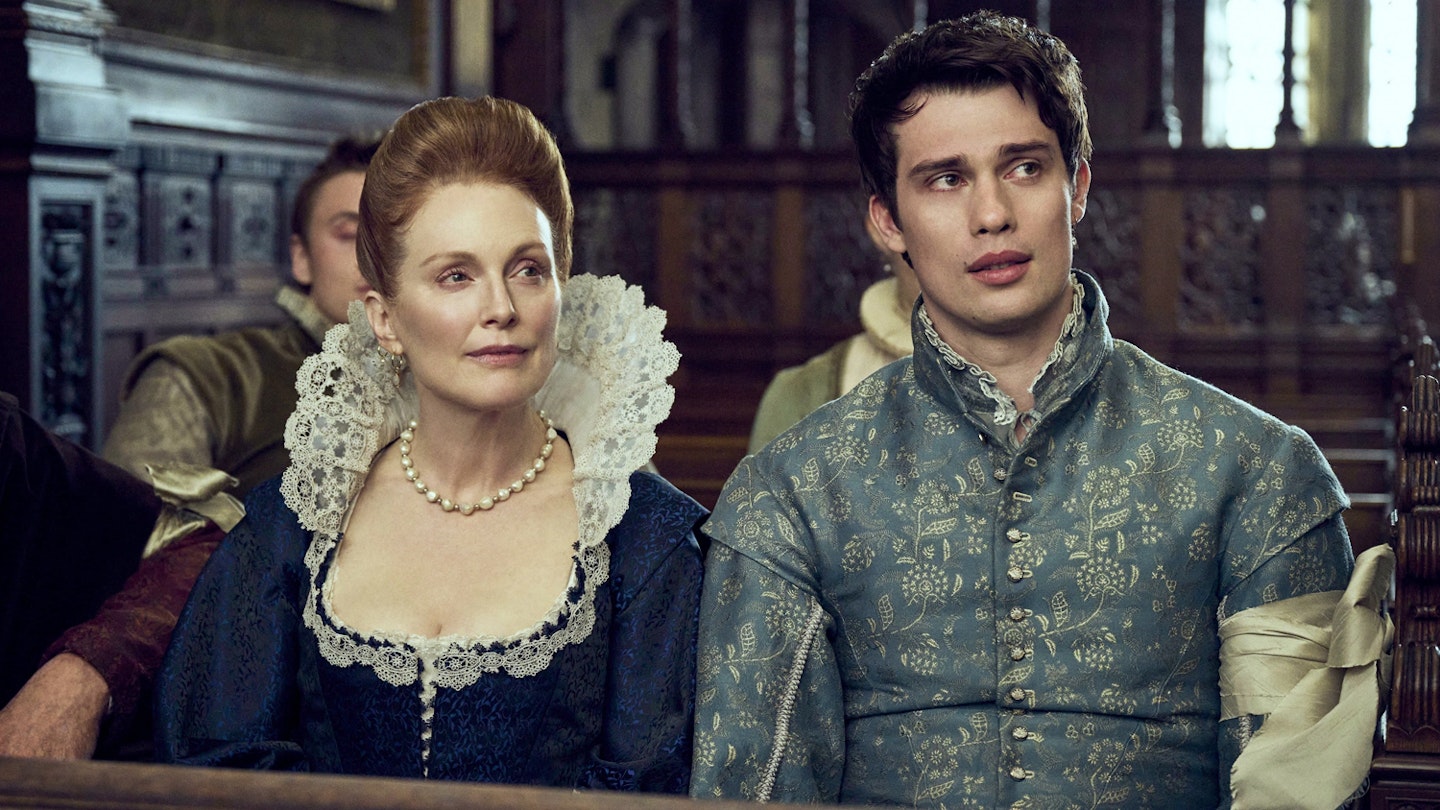Streaming on: Sky / NOW
Episodes viewed: 7 of 7
“If I were a man, and I looked like you, I’d rule the fucking planet.” A great line, spoken by Julianne Moore’s ruthless, endlessly scheming Mary Villiers to her son, Nicholas Galitzine’s George, as he shows reluctance to do her bidding. George is Mary’s second son, and as such, she expected him to be nothing but a burden. It’s only when he grows into such a strapping young lad, with a diverse set of sexual desires, that she realises he could be her ultimate chess-piece in the harsh, high-class world of Jacobean England.

Mary & George zeroes in on a fascinating piece of British royal history: the court of James Stuart, King of both Scotland and England, and the shifting sands of power within it. His Majesty is renowned for having ‘favourites’: boys invited to his bed, who have his ear. With several unwed children and in a dire financial situation after her husband dies, Mary sees getting in with the King as a path to security — and it works. George turns James’ head, and Mary reaps the benefits. Staying in power is never easy, though, as former lovers, fellow aristocrats and rising tensions with Spain threaten to destroy all that Mary and George have built.
Julianne Moore is on great form here.
Moore is on great form here. She spits out profanities and ultimatums in a clipped, crisp accent, wearing a series of increasingly to-die-for costumes and never faltering in the face of those above her on the societal ladder. She maintains a sense of fear and vulnerability about her precarious state as a woman without money, and her need to overcome that, meaning Mary never really comes off as a villain despite her many dirty deeds.
Galitzine (who, between this, Bottoms, and Red, White And Royal Blue, is having quite the breakout year) matches Moore blow for blow. He perfectly embodies the alluring physicality that makes him such a unique political player, while always giving George depth and complexity beyond that. Tony Curran shines, too, as the chaotic, emotional King James, and his and Galitzine’s chemistry is strong, flitting between pure passion and quiet tenderness.
This show seems to have sold itself as a bit of a sex-fest — not your mother’s period drama, full of swearing and scheming and bite. Unfortunately, the best examples of that are fairly limited to the first half of the series. The first few episodes establish a brilliant, blackly-comedic tone, threaded through with violence and seduction, giving a modern feel to the historical aesthetic through spiky, witty dialogue, blunt editing and a pulsing, synthy score. Those flourishes (and the intimate scenes) fall away, though, as the series goes on, and the show becomes something far more conventional and one-note by the end. This is still a remarkable story to tell, and it consistently looks glorious (the first three episodes are directed by Living’s Oliver Hermanus), but there’s a real sense of energy petering out as Mary & George goes along. If only it had kept up that fresh intensity it started with, it, much like its central characters, could have ascended much closer to greatness.
